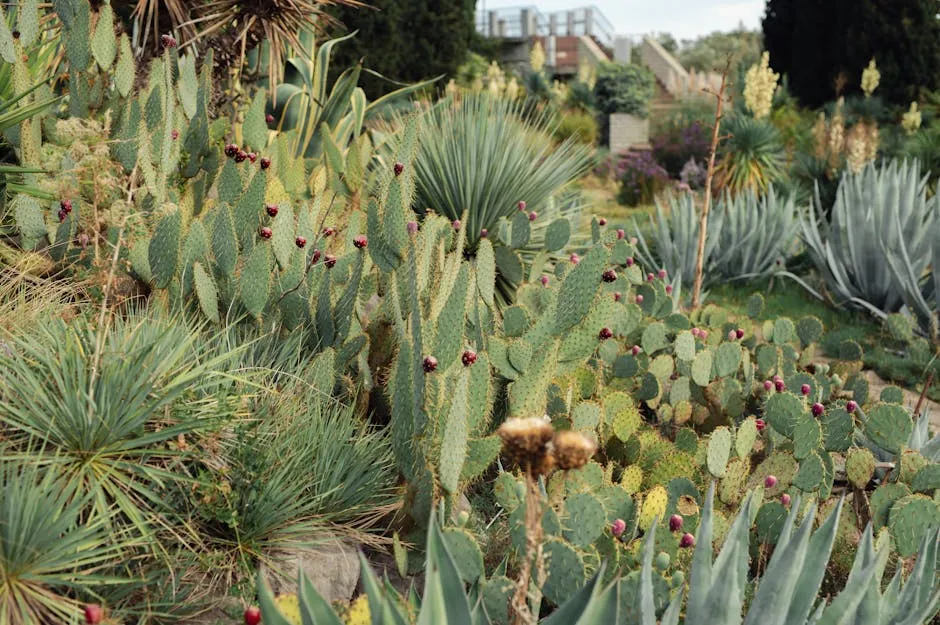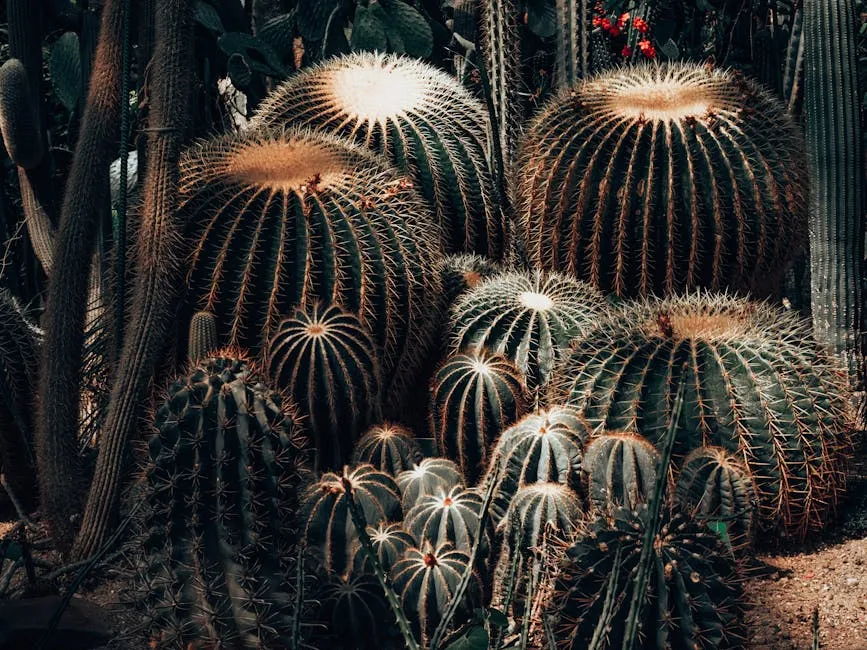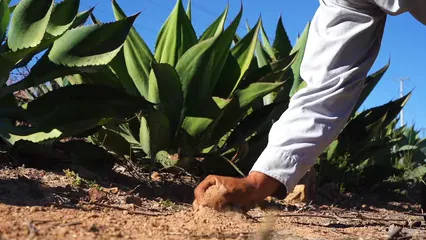

The Ultimate Guide to Cactus Plants: Care, Types, and Benefits
Introduction
Cactus plants are gaining popularity, and for good reason! Their unique shapes and vibrant blooms capture our attention. They thrive in various environments, making them perfect for any plant lover. In this guide, we’ll uncover the essentials of cactus care, the different types available, and the many benefits they offer.
Before you dive into cactus care, make sure you have the right supplies! A Cactus Potting Mix is essential for providing the right drainage and nutrients for your spiky friends!
Summary and Overview
Cactus plants belong to the family Cactaceae. They are characterized by their thick, fleshy parts that store water, allowing them to thrive in arid climates. Cacti are incredibly resilient, often found in deserts where other plants struggle. Their adaptations include spines that reduce water loss and a unique ability to photosynthesize effectively despite extreme conditions. Growing cacti can offer numerous benefits, whether indoors or outdoors. They require minimal care, making them perfect for busy individuals. Additionally, cacti improve air quality by filtering toxins, contributing to a healthier living space. With their eye-catching appearance, they make stunning focal points in any garden or home. To learn more about how to enhance indoor air quality with plants, check out our article on the best plants for purifying indoor air quality.

Cacti can significantly improve your living space’s air quality. Discover the best plants for purifying indoor air quality.
What is a Cactus Plant?
Cacti are a distinct group within the plant kingdom, classified under the order Caryophyllales. Unlike succulents, which encompass a broader category of water-storing plants, cacti have unique features. They often possess spines instead of leaves, which serve to protect them and reduce water evaporation. Their thick, fleshy stems are adept at storing water, allowing them to endure long dry spells. There are about 2,000 species of cacti worldwide, ranging from the towering Saguaro to small, decorative varieties. Cacti thrive in various habitats, primarily in dry, rocky areas. Each species has adapted to its environment, showcasing the incredible diversity of cactus types. What’s your favorite cactus type? Share it in the comments!
To ensure you’re equipped for cactus care, consider picking up a Cactus Care Book. It’s like having a cactus expert right in your pocket!
The Benefits of Growing Cactus Plants
Incorporating cactus plants into your home or garden offers numerous advantages. One of the biggest benefits is their low water requirements. Cacti thrive in dry conditions, needing minimal irrigation. This makes them perfect for busy individuals or those living in arid climates.

Additionally, cacti play a role in improving indoor air quality. A study by NASA found that certain cacti can filter out harmful toxins from the air. By adding these air-purifying plants to your space, you can breathe easier and enjoy a healthier environment.
Speaking of air quality, consider adding a few Air Purifying Indoor Plants Kit to your collection. It’s a great way to complement your cacti and improve your living space!
Cacti also add a unique aesthetic appeal to any setting. Their diverse shapes and vibrant blooms can brighten up any room or garden. With so many styles available, there’s a cactus for every taste.
Consider adding cacti to your plant collection! Their beauty and low-maintenance nature make them an excellent choice for both new and experienced plant lovers.
Different Types of Cacti
When it comes to popular cactus varieties, the options are vast. Each type offers unique features that can enhance your home or garden.

Saguaro Cactus: Iconic for its tall, tree-like structure, the Saguaro can grow up to 40 feet tall. It’s a symbol of the American Southwest and can live for over 150 years.
Barrel Cactus: This round cactus comes in various sizes, often featuring beautiful blooms. It’s known for its ribbed appearance and can thrive in rocky terrains.
Christmas Cactus: Unlike traditional cacti, this variety produces stunning flowers during the winter months. Its flat, segmented stems make it a popular houseplant.
Fishbone Cactus: Known for its unique, zigzag shape, this tropical cactus is perfect for hanging baskets. It thrives in bright, indirect light and adds a touch of whimsy.
With over 2,000 cactus species available for cultivation, you have plenty of options to explore. Visit local nurseries or online stores to discover your favorite varieties! If you’re looking for rare options, check out our guide on rare cactus plants for sale.

Explore the diversity of cacti and find unique varieties to enhance your collection. Discover rare cactus plants for sale.
Cactus Care Tips
Watering Guidelines
Proper watering is crucial for cactus health. Overwatering can lead to root rot, a common issue. Signs of overwatering include yellowing, mushy stems, and a foul smell from the soil. To avoid this, water your cactus only when the soil is dry. Depending on the type, this might be every two to four weeks. During the growing season, typically spring and summer, increase the frequency slightly. In winter, reduce watering as cacti enter dormancy. Remember, it’s always better to underwater than overwater. What’s your watering schedule like? Share your tips in the comments!
To help monitor your watering needs, consider investing in a Soil Moisture Meter. This handy tool takes the guesswork out of watering!
Light Requirements
Cacti thrive in bright light, but not all sunlight is the same. Direct sunlight can scorch their skin, while too little light may stunt growth. Ideally, place your cactus in a spot that receives plenty of indirect sunlight. If you notice stretching or pale color, your plant might be craving more light. Conversely, brown spots or fading colors can indicate too much direct sun. Assess your cactus’s light conditions regularly for optimal growth. Have you checked your cactus’s light exposure recently?
Soil and Potting
Choosing the right soil and potting technique is vital for cactus health. Cacti thrive in well-draining soil mixes. A popular option is a blend of potting soil, sand, and perlite. This combination allows moisture to escape easily, preventing root rot.

When selecting a pot, look for one made of terracotta or clay. These materials help wick moisture away from the soil. It’s essential to choose a pot with drainage holes. Without them, excess water can accumulate, leading to serious health issues for your cactus. You can find beautifully designed Terracotta Plant Pots that are perfect for your cactus collection!
Statistics show that a proper potting mix significantly improves cactus growth rates. For instance, using a mix with at least 50% inorganic materials can enhance drainage.
Ready to experiment with your cactus potting techniques? Give different soil mixes a try and see what works best for your plants!
Propagation Techniques for Cacti
Propagation is a fun way to expand your cactus collection. There are several effective methods to consider. One popular technique is using stem cuttings. Simply cut a healthy stem from your cactus and allow it to dry for a few days. Then, plant it in a suitable mix.

Offsets are another great option. Many cacti produce smaller “baby” cacti at their base. Gently remove these offsets, let them dry, and then pot them separately.
Seed propagation is also possible, though it takes more time. Gather seeds from mature cacti and plant them in a well-draining mix. Keep them warm and moist until they sprout.
What’s your favorite propagation method? Share your experiences in the comments!
Common Pests and Diseases
Cacti are beautiful and resilient, but they can face challenges from pests and diseases. One common pest is the mealybug. These tiny, white insects suck sap from your cactus, weakening it over time. Scale insects are another problem. They appear as small, brown bumps on the cactus’s surface. Both pests can be managed with neem oil or insecticidal soap.

Statistics show that around 80% of cactus owners experience mealybug infestations at some point. Root rot is another serious issue, often caused by overwatering. Signs include yellowing, mushy stems, and a foul odor from the soil. To prevent root rot, ensure your cactus has well-draining soil and pots with drainage holes.
Regular inspection of your plants is essential for catching these issues early. Have you checked your cactus for pests recently?
Creative Ways to Display Cactus Plants
Showcasing cactus plants can be a fun and creative endeavor. Terrariums offer a unique way to display cacti in a controlled environment. You can mix various small cacti in a glass container, creating a mini desert landscape. To get started, consider a Cactus Terrarium Kit that comes with everything you need!

Vertical gardens are another stylish option. By mounting cacti on a wall, you save space while adding visual interest. Use wooden pallets or wall-mounted planters to create an eye-catching display. If you’re interested in how to choose the right soil for your vertical garden setup, be sure to read our guide on how to choose the right soil for indoor vertical gardens.
Creating a vertical garden can elevate your cactus display. Learn how to choose the right soil for indoor vertical gardens.
Unique potting arrangements can also enhance your cactus decor. Consider using colorful, decorative pots or repurposing items like teacups or tin cans. These creative displays can be conversation starters in any room. Don’t forget to check out some Decorative Stones for Planting to give your arrangements an extra flair!
Have you set up a cactus display at home? Share your photos on social media!
Conclusion
Cacti are remarkable plants that offer unique qualities for various environments. Their low maintenance and stunning aesthetics make them ideal for both new and experienced plant lovers. Whether you grow them indoors or outdoors, cacti enhance any space with their charm.

Take the time to explore the fascinating world of cacti further. You might just discover your new favorite plant! And while you’re at it, consider grabbing a Plant Care Journal to track your cactus growth and care progress!
Please let us know what you think about our content by leaving a comment down below!
Thank you for reading till here 🙂
All images from Pexels



